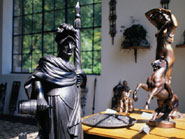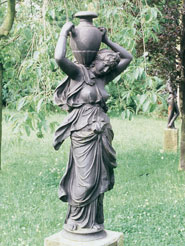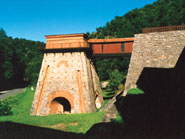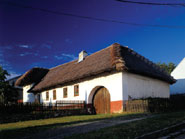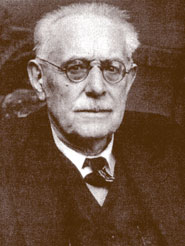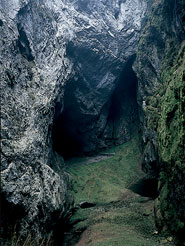GEOGRAPHY, HISTORY AND FAMOUS PERSONAGES
Welcome to the Blansko region ...
... to the north of Southern Moravia, to the valley of the River Svitava, to
the place where the Drahany Highlands meet the Highlands of Bohemia and Moravia,
a region with a rich history and tradition of craftwork, a region associated
with the lives and destinies of many famous people...
Demographic details on the southern part of Blansko district:
This area takes in around 55 towns and villages with a population of 57,304. The town of Blansko itself has a population of 20,694 (as of 31 March 2001). The total area of the Blansko region is 942 km2.
Remarkable historical testimonies
Blansko
Blansko began life as a settlement on the right bank of the River
Svitava. The first written record comes from 1141, when its name appears in a
document from Bishop of Olomouc Jindřich Zdík as part of the Olomouc fief.
Records of “New Blansko”, a settlement which sprang up on the opposite bank of
the Svitava at the spot where the chateau now stands, appear from the end of the
13th century onwards. The two parts of the town developed independently, in
terms of their administration and economics, until 1526. In 1580 Blansko was
elevated to the status of township and given the right to use a township seal.
From the end of the 17th century Blansko belonged to the Silesian house of the
Counts of Gellhorn, who established large-scale iron production here in 1698. In
1766 the estate was purchased by the Salm-Reifferscheidt family which then held
it until 1945. The first half of the 19th century saw a boom in Blansko’s iron
industry and the production of artistic cast-iron (see picture). A great day in
the history of Blansko came in 1905 when it was elevated to the status of a town
by the decree issued by Emperor Franz Joseph I. In 1960 Blansko became the
district capital.
Famous personages from the Blansko region
Since long ago Blansko has been associated with a number of distinguished
people of a supra-regional importance, who had a significant influence on many
areas of social life: Karel Absolon – the Czech palaeontologist and speleologist
(see picture), Jan Dubravius – the Czech humanist and Bishop of Olomouc, Arnošt
Julius Leopold, Count of Gellhorn – founder of the Blansko ironworks, Karel
Ježek – son of the founder of the company Adamovské Strojírny (Adamov Machine
Works), Jindřich Zdík – Czech cleric and diplomat and Bishop of Olomouc,
Caroline von Linsingen – wife of the future King of England William IV, Karel
Jaroslav Maška – Moravian archaeologist and anthropologist, Karel Ludvík Baron
von Reichenbach – managing director of Blansko Ironworks, Erich Roučka –
Moravian engineer, inventor and research scientist, Ferdinand von Saar –
Austrian writer and playwright, Hugo František Count of Salm – founder of
František Museum in Brno (now the Moravian Museum), Hugo V. Sáňka – teacher and
local historian, Josef Stařecký – the first working-class mayor of the town of
Blansko, František Trávníček – Czech linguist, Dr. Jindřich Wankel – a leading
personality in Czech cultural and scientific life in the second half of the 19th
century, and Jan Žalkovský of Žalkovice – owner of the Blansko estate.
Adamov
In the Middle Ages the area belonged to the Nový Hrad estate. From the
17th century onwards it was then part of the Pozořice estate. Iron-mills were
originally located here. The name Adamov was first given to the settlement
established here at the turn of the 17th and 18th centuries. The town has long
been associated with a tradition of iron production (see picture – the Františka
Ironworks).
Černá Hora
The first records date back to the 11th century and are associated with
the Lords of Černá Hora. From the end of the 14th century Černá Hora belonged to
the Lords of Boskovice, one of whom, Vaněk Černohorský of Boskovice, played an
active role in the political life of the Czech Kingdom. In 1415 he was one of
the Czech and Moravian noblemen who voiced their opposition to the burning to
death of John Hus.
Holštejn
The name of this village, not far from Sloup, was derived from the
corruption of the German Höhler Stein (Hollow or Cave Stone), originally a
settlement around a castle and first recorded in 1349. Sources from the middle
of the 16th century note a little town with a courtyard and fishpond. The Lords
of Holštejn were a large and famous family in the Middle Ages. One of them, Crha
of Třebelovice, attained a high social position during the reign of Přemysl
Otakar II.
Jedovnice
The first records of Jedovnice date back to 1251, at which time it formed
part of the Holštýn estate. It is also recorded in a charter of John of
Luxemburg from 1335, when the king confirmed the town’s right to the forests for
its faithful service. This charter also elevated Jedovnice (see picture) to the
status of a town, as which it obtained a coat-of-arms and was accorded the right
to seal documents with green wax. In addition to the Hussite Wars and the
Thirty-Year War, Jedovnice also experienced a number of other catastrophes, such
as a cyclone, fires, plague and cholera. In 1579 Jedovnice obtained the right to
hold markets, which were subsequently held here without interruption for 360
years.
Křtiny
A famous place of pilgrimage, Křtiny is first mentioned in 1237. In the
14th century it belonged to the “de Krscina” family. It obtained its seal in
1629. Priests from the church in Zábrdovice in Brno attended to the spiritual
administration of Křtiny.
Ostrov u Macochy
The village was originally the seat of a family of the same name. The
first mention of one of its members, Albert of Ostrov, comes from 1349. At the
end of the 14th century Ostrov belonged to the Holštýn estate, as which it is
first mentioned in 1371.
Rájec nad Svitavou
Originally a feudal estate of the Bishops of Olomouc. Its name is first
mentioned in relation to Blansko in 1141 in a document of the Bishop of Olomouc,
Jindřich Zdík. Records of the Lords of Rájec appear from the 13th century
onwards. Following the Hussite Wars, which greatly devastated the Rájec estates,
it was restored to the Olomouc bishopric in 1446. A particularly important
figure associated with Rájec was Hugo František of Salm-Reifferscheidt, who
opened the first sugar refinery in Moravia here.
Rudice
In the Middle Ages a fortified settlement stood here, the remnants of
which were torn down in 1869. Freemen settled here, who took their name from the
name of the village. The surrounding area was famous for the extraction of iron
ore, and the whole area remains extremely rich in minerals to this day. Iron ore
was mined here until 1893. The famous Olomučany ceramics were made from the
excellent local clays.
Senetářov
Senetářov was probably established by the Lords of Holštejn and settled
by German colonists. It belonged to the Holštýn estate, in relation to which it
is mentioned in 1406. During the German occupation it was evacuated, and
resettled after the war (see picture – a thatched cottage – The Museum of
Traditional Habitation and Pearl Working).
Sloup
The first written records come from the 14th century. In 1862 the village
was elevated to the status of a township, and two annual markets were permitted
(see picture – Hřebenáč near Sloup).
Fragments of history from the subterranean Moravian Karst
The subterranean spaces of the Moravian Karst conceal many secrets from
the past. The Hladomorna (Dungeon) Cave beneath Holštejn Castle, for example,
served as a prison in the Middle Ages, while the Výpustek and Dagmar Caves were
home to coin counterfeiters in the 17th century. It was also in the 17th century
that Boetius, physician to Emperor Rudolf II, became the first person to show a
scientific interest in the caves and understand the process by which stalagmites
and stalactites are formed. In 1723 Lazar Schopper, a Minorite friar from Brno,
descended to the bottom of the Macocha Abyss. In the 19th century Dr. Jindřich
Wankel, discoverer of the famous find known as the Prince’s Burial at Býčí Skála
(Bull Rock), conducted an expert archaeological and speleological investigation
of the caves in the Moravian Karst. A number of further investigations were
conducted by Dr. Karel Absolon in the 20th century. During the Second World War
the caves were used as secret arms factories by fascist Germany. A number of
them were destroyed or seriously damaged.

